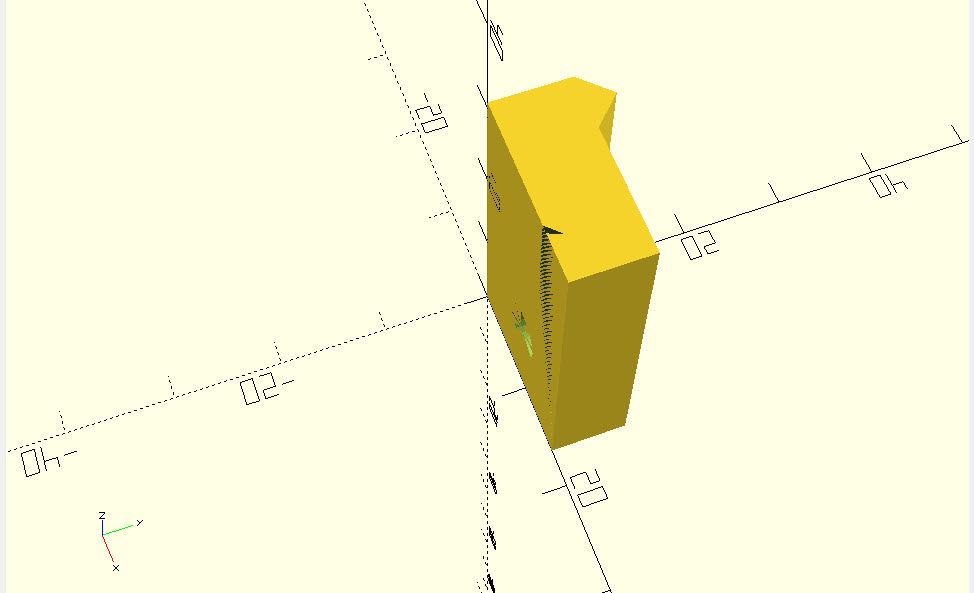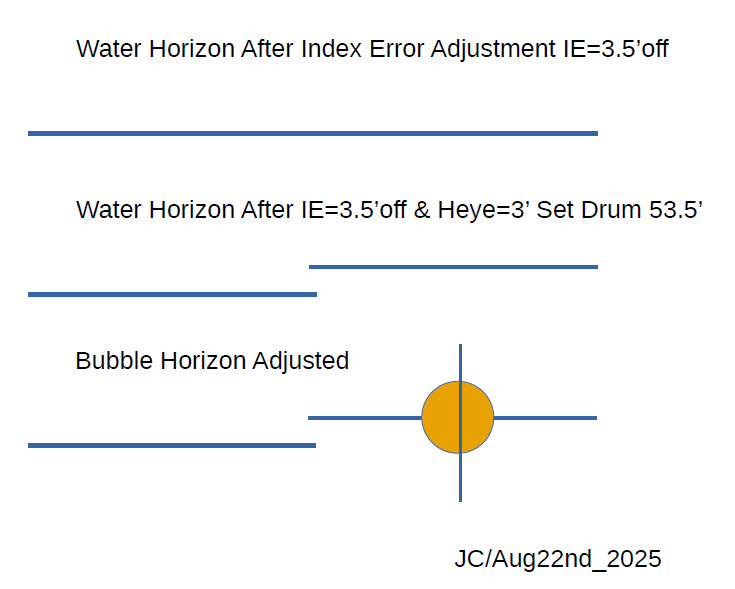Introduction


The addition of an artificial horizon to a Marine Sextant allows measurements to be taken when you don’t have a water horizon nearby. I purchased an Artificial Bubble Horizon and adapted it to fit on my existing Sextant. The mounting slot on the Horizon was the mirror image to the slot on my Sextant, so I designed an adapter bracket using a 3D printer with OpenSCAD. Figure 1 shows the combination and Figure 2 shows the yellow bracket.
Bubble Adjustment

In order to calibrate the Artificial Bubble Horizon, you first adjust the Index Error. In this particular case the IE was 3.5′ off limb so the drum showed 56.5′. My height of eye was 3m so the Dip = 3′. This is added to the Index Error so the drum setting was decreased to 53.5′. This raised the horizon up 3′ as shown in Figure 3 (Ref.1/2). After this was done, I adjusted the Horizon light bulb to full illumination which put the orange circle right on the raised horizon. There is an adjustment screw on the bottom of the unit which was previously calibrated correctly and locked with paint.
Please send your comments, questions and suggestions to:
contact:

References
#1. – “Celestial Navigation Basices – Ha Apparent Altitude”
https://jeremyclark.ca/wp/nav/celestial-navigation-basics-ha-apparent-altitude/
#2. “Celestial Navigation Basics – Hs Sextant Altitude”
https://jeremyclark.ca/wp/nav/celestial-navigation-basics-hs-sextant-altitude/
